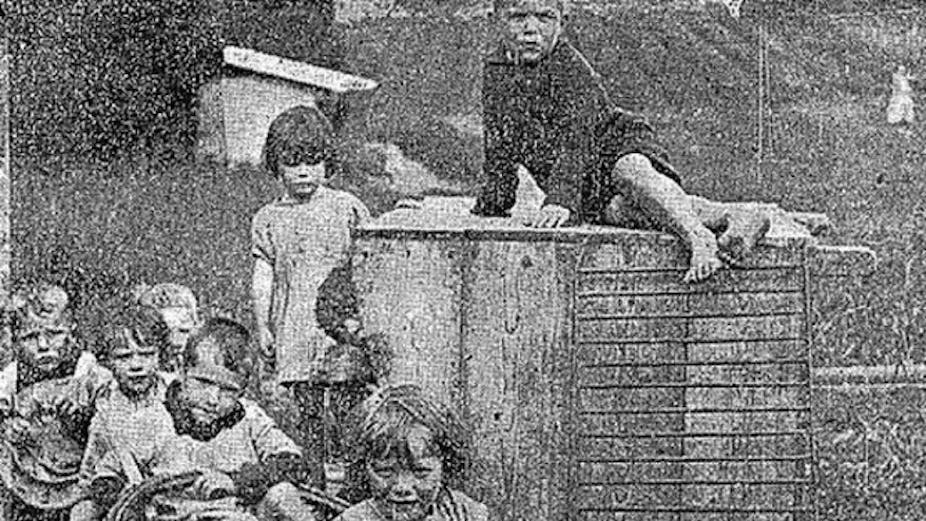Yet another horrific story of historic abuse has emerged in Ireland. In what has become a disturbing pattern, it was mostly the international media who reported that the remains of 796 children and babies (a count which excludes the stillborn) had been found interred in a concrete septic tank in the grounds of a since-abandoned mother-and-baby home in Tuam, county Galway. The home was run by Catholic nuns from the Sisters of Bon Secours between 1925 and 1961.
And in typical fashion, official Ireland has been slow and low-key with its response. After days of inaction, the Taoiseach asked the minister for children to convene senior officials from a number of departments to deal with the issue.
For his part, Archbishop of Dublin Diarmuid Martin announced that:
if a public or state inquiry is not established into outstanding issues of concern surrounding the mother-and-baby homes, then it is important that a social history project be undertaken to get an accurate picture of these homes in our country’s history.
Until the 1990s, Ireland dealt with unmarried mothers and their children by incarcerating them in state-funded, church-run institutions called mother-and-baby homes, or Magdalene laundries. The homes were run for profit by the church, who received a capitation from the Irish state; the women committed to them were seen as “fallen women”, a contagion on Irish society.
Reports are emerging that during the 1940s, child death rates in three other mother-and-baby homes run by religious orders were as high as 50%. Evidence also provided in the Ryan Commission on child abuse in the Catholic church found that children in the homes were used as test subjects for vaccine trials.
The Adoption Rights Alliance has said the children of unmarried mothers were regarded as “sub-human”, and that children in mother and baby homes often died of “entirely preventable ailments” – at worst, from “infanticide and/or neglect”.

From its founding, the state of the Republic of Ireland was defined by the aim of establishing a model Christian country. That religious influence did not stop at the content of public policy on marriage, divorce, contraception, and health services; the church itself was deeply embedded in the operation of social services that developed in post-independence Ireland. The discovery at the home in Taum is yet another example of the grim reality created by these deep institutional links.
Wilful blindness
The community of Tuam has been aware of the grave since at least 1975, when two boys broke apart the concrete slab covering it and discovered a tomb filled with small skeletons. A parish priest said prayers at the site, and it was sealed once more, the number of bodies below unknown, their names forgotten.
The story has only re-emerged thanks to the work of local historian Catherine Corless, who began to investigate the extent of the mass grave. Corless expressed surprise at the Irish media’s lack of interest. The failure of mainstream media needs to be considered – they were more focused on covering the potential tourism bonanza around Kim Kardashian and Kayne West’s honeymoon and the building of a petrol station in Moneygall cringeworthily named “Barack Obama Plaza”.
So far the Gardaí (the police) have not sealed the site, and no forensic examination has been planned, with only a “scoping exercise” underway.
It’s high time for official Ireland to act, and quickly. A full and extensive criminal investigation is required – one that not only looks into the deaths of these 800-odd children and babies, but also into the lives of their mothers.
From abroad, it seems Ireland is suffering a kind of collective fatigue around crimes against humanity committed by the Catholic church, the Irish state, and Irish society as a whole. Perhaps the reality is that official Ireland and the culture simply do not have it in them to deal with the full extent of these horrors. It may be that an external entity is required to properly investigate these crimes – and to allow for some kind of catharsis.

